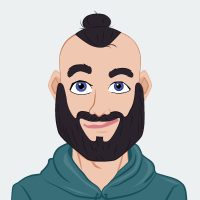The Beauty of Being a Dancer with Cerebral Palsy

"I am communicating freedom," says Jerron Herman, 31, a professional dancer.

Sixty-one million Americans—one in four of us!—live with some form of what’s usually called a disability. Men's Health talked to nine people who show that the things that might have once held them back have only unleashed their potential. Read more here.
Jerron Herman never expected to become a dancer. Then he interned with a theatre company in New York and was inspired. During college, he auditioned for Heidi Latsky Dance, a collective of dancers with and without disabilities. “Heidi was interested in my form of cerebral palsy, as I moved in a way that excited her, even though the left side of my body is impacted by spasms and mostly restricted movement,” he says. He became a lead dancer and eventually began performing independently, booking shows everywhere from the Kennedy Center for the Performing Arts to the Whitney Museum of American Art.
“You have to give yourself grace,” Herman says. “My movement on the day of a performance could be very different from prior rehearsals. I have learned to be okay with that. There’s even beauty in the uniqueness of each performance. I most recently choreographed and performed, as a Black disabled man, my rendition of Leonardo da Vinci’s Vitruvian Man to get others to think about disability aesthetics and man’s function. But I think every single time I dance, I am communicating freedom. It’s the freedom to be true to myself. The freedom to listen to my body. The freedom to create. You don’t need to be able-bodied to be free.”
Categories
- All Categories
- 15.7K Start here and say hello!
- 7.4K Coffee lounge
- 103 Games den
- 1.7K People power
- 149 Announcements and information
- 24.7K Talk about life
- 6K Everyday life
- 468 Current affairs
- 2.5K Families and carers
- 888 Education and skills
- 1.9K Work
- 555 Money and bills
- 3.7K Housing and independent living
- 1.1K Transport and travel
- 630 Relationships
- 1.5K Mental health and wellbeing
- 2.5K Talk about your impairment
- 873 Rare, invisible, and undiagnosed conditions
- 936 Neurological impairments and pain
- 2.2K Cerebral Palsy Network
- 1.2K Autism and neurodiversity
- 40.8K Talk about your benefits
- 6.1K Employment and Support Allowance (ESA)
- 20K PIP, DLA, ADP and AA
- 8.9K Universal Credit (UC)
- 5.9K Benefits and income